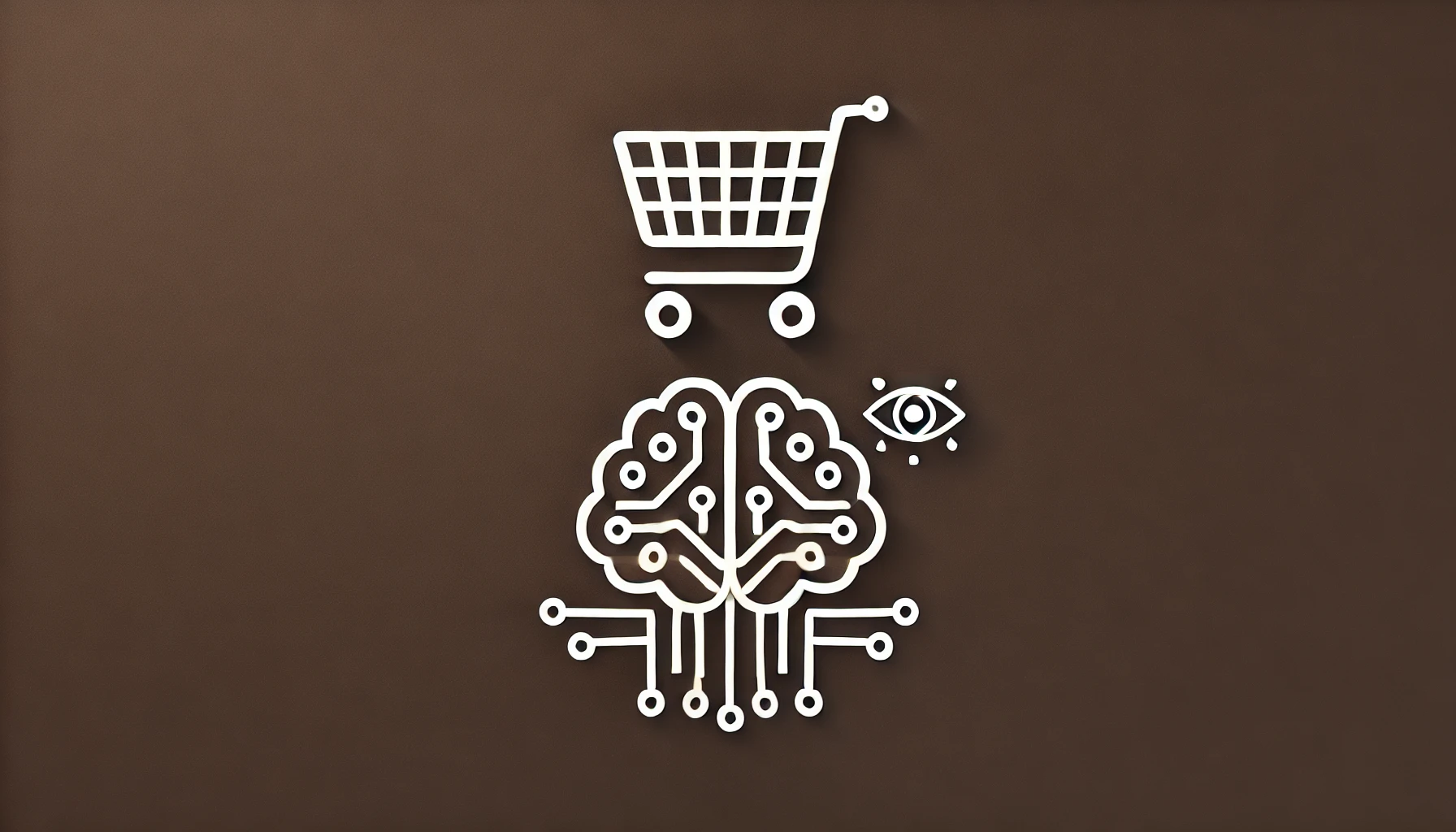1. Introduction
Imagine launching an e-commerce store that starts with a few hundred visitors a day but soon attracts thousands, even millions, as your brand grows. That’s the dream, right? But what if your website crashes under the pressure, slows down, or fails to provide a smooth user experience? This is where scalability in ecommerce website development becomes critical.
Scalability is the ability of your website to handle increasing traffic, transactions, and content without compromising performance. A scalable e-commerce website ensures that as your business expands, your customers continue to enjoy a seamless shopping experience. In this article, we’ll explore why scalability matters, how to achieve it, and what best practices you can follow to future-proof your online store.
2. Understanding Scalability in E-commerce
Picture this: your online store is running smoothly with a manageable number of daily visitors. Then, suddenly, a viral campaign or a festive sale sends thousands of shoppers your way. Exciting? Absolutely. But if your website isn’t built to scale, this sudden surge could spell disaster—slow loading pages, frustrated customers, and worst of all, lost sales.
Scalability in web design refers to how efficiently a website can handle growth—whether that means more users, a larger inventory, or higher transaction volumes. A well-scaled e-commerce platform ensures that your business can handle these changes without breaking a sweat.
So, why is scalability a must-have for e-commerce businesses? Because today’s shoppers expect speed, reliability, and convenience at all times. A slow or crash-prone website can quickly drive customers away, damaging your brand’s reputation and revenue potential.
Some common challenges businesses face when scaling include:
- Traffic surges during peak seasons or flash sales – If your website isn’t prepared, an influx of visitors can overload your servers, leading to crashes and downtime.
- Database congestion due to high user activity and extensive product listings – As your store grows, your database needs to manage increased queries efficiently.
- Sluggish response times from inefficient backend operations – Poorly optimized code, unstructured databases, and lack of caching strategies can cause frustratingly slow load times.
By addressing these pain points with a scalable website architecture, businesses can create a seamless, high-performing shopping experience for their customers. This means investing in robust hosting solutions, optimized databases, and efficient backend systems that can grow alongside your brand. The result? A website that’s always fast, reliable, and ready for success—no matter how big your business gets.
3. Key Elements of a Scalable E-commerce Website
1. Flexible Hosting Solutions
Think of hosting as the foundation of your online store. Just like a physical store needs a solid building, your website needs robust hosting to handle growing traffic. Cloud-based hosting solutions like Amazon Web Services (AWS), Google Cloud, and Microsoft Azure automatically adjust resources based on demand, preventing slowdowns or crashes.
Additionally, Content Delivery Networks (CDNs) such as Cloudflare and Akamai distribute website content across multiple global servers, ensuring lightning-fast load times regardless of where customers are shopping from. This means a user in Sydney will experience the same speed as one in New York—critical for maintaining a seamless shopping experience.
2. Optimized Website Architecture
Imagine a well-organized warehouse where products are neatly stacked, making it easy to find what you need. That’s what a well-structured website does for your e-commerce store.
A modular architecture allows different sections of your site—like product pages, checkout, and user accounts—to function independently, minimizing bottlenecks. Many large-scale e-commerce businesses now use microservices architecture, which breaks down the website into smaller, self-contained units. This ensures that if one component experiences high traffic, the rest of the website remains unaffected.
3. Efficient Database Management
Your database is the heart of your e-commerce store, storing everything from product listings to customer orders. But as your business grows, so does the volume of data. Without efficient database management, searches can slow down, leading to a frustrating shopping experience.
To prevent this, businesses should leverage scalable database solutions like NoSQL databases (MongoDB, Cassandra) and partitioned SQL databases (MySQL, PostgreSQL). Implementing caching mechanisms like Redis and Memcached speeds up database queries, ensuring that product pages load instantly.
4. Responsive & Adaptive Web Design
Did you know that over 60% of e-commerce traffic comes from mobile devices? If your website isn’t mobile-friendly, you’re losing potential customers. A responsive web design ensures your site adjusts seamlessly to different screen sizes, whether it’s a smartphone, tablet, or desktop.
Even better, an adaptive web design tailors the experience based on device capabilities. For example, a mobile user might see a simplified menu and larger buttons, while a desktop user gets full-featured navigation. This personalized approach ensures an intuitive shopping experience for everyone.
5. Performance Optimization
Speed is everything in e-commerce. A slow-loading site can cause visitors to leave before even seeing your products. In fact, studies show that a 1-second delay in page load time can result in a 7% drop in conversions.
To keep your site running fast:
- Use lazy loading to ensure images and content load only when needed.
- Compress images to reduce file sizes without losing quality.
- Leverage browser caching to store frequently accessed elements locally, improving return visitor load times.
- Minimize HTTP requests by combining multiple scripts and stylesheets into single files.
6. Security & Compliance
With great growth comes great responsibility—especially when it comes to security. As your e-commerce business scales, it becomes a more attractive target for cyber threats.
To protect your website and customers:
- Enable SSL encryption to secure data transfers and gain customer trust.
- Follow PCI DSS compliance to ensure safe handling of payment transactions.
- Conduct regular security audits to identify and patch vulnerabilities before hackers do.
- Implement two-factor authentication (2FA) for admin and user accounts to prevent unauthorized access.
A secure e-commerce website not only protects sensitive data but also builds long-term customer trust, which is essential for sustained growth.
4. Ensuring Seamless User Experience with Scalability
Scalability isn’t just about handling more visitors—it’s about keeping your customers happy. A scalable website enhances the user experience in several key ways:
- Lightning-Fast Load Times – A slow site is a deal-breaker. Scalability ensures your pages load quickly, keeping visitors engaged and boosting conversions.
- Seamless Navigation – Customers can effortlessly browse categories, filter products, and make purchases without frustration.
- Personalized Shopping Experiences – AI-driven recommendations and dynamic content create tailored experiences without compromising speed.
- Minimal Downtime, Maximum Reliability – Even during Black Friday sales, your website stays up and running without a hitch.
Take Amazon, for instance. Despite handling millions of users daily, it delivers seamless speed and usability. While small businesses may not need Amazon’s infrastructure, implementing similar scalability principles ensures smooth growth and long-term success.
5. Best Practices for Scalable E-commerce Website Development
Building a scalable e-commerce store isn’t just about handling traffic surges—it’s about creating a future-proof online business that grows seamlessly without technical roadblocks. Whether you’re expanding your product catalog, handling increased transactions, or integrating new marketing tools, your website should adapt effortlessly to meet evolving demands.
Here’s how to ensure your e-commerce website is built for long-term success:
1. Choose the Right E-commerce Platform
Your e-commerce platform is the backbone of your online store, so selecting the right one is critical to scalability. Platforms like Shopify, WooCommerce, and Magento are designed to scale with your business, offering flexibility, security, and integration capabilities.
- Shopify is perfect for businesses that want an all-in-one solution with minimal technical maintenance.
- WooCommerce (a WordPress plugin) offers flexibility and customization, making it great for businesses that want control over every aspect of their store.
- Magento is a powerhouse for large-scale e-commerce businesses that require advanced customization and performance optimization.
Choosing a scalable platform ensures your website won’t struggle as your business expands.
2. Scalable Checkout and Payment Gateways
Imagine a customer is ready to buy, but your checkout page takes forever to load—or worse, crashes. Frustrating, right? A slow or unstable checkout process can lead to abandoned carts and lost revenue.
To prevent this:
- Use a payment gateway that can handle high transaction volumes (such as Stripe, PayPal, or Square).
- Offer multiple payment methods, including credit/debit cards, digital wallets, and buy-now-pay-later options, ensuring seamless transactions.
- Optimize the checkout flow by reducing unnecessary steps, enabling guest checkout, and using auto-fill features for faster processing.
A frictionless checkout process not only boosts conversions but also enhances customer satisfaction.
3. API-First Design for Seamless Integrations
As your business grows, you’ll need to integrate new tools—from CRM systems to marketing automation and analytics. An API-first approach ensures that your e-commerce site can easily connect with third-party services without requiring major development overhauls.
For example, an API-first design allows you to:
- Integrate with new payment gateways without disrupting operations.
- Sync real-time inventory updates across multiple sales channels.
- Connect with AI-driven personalization tools to enhance user experience.
By adopting an API-first approach, your website remains adaptable and future-proof, making integrations smooth and hassle-free.
4. Automate Where Possible
Scaling a business means managing more orders, more customer queries, and more backend processes. The best way to handle this growth without overwhelming your team? Automation.
Here are some game-changing automation strategies:
- AI Chatbots: Instantly respond to customer inquiries, improving engagement and reducing response time.
- Automated Inventory Management: Keep stock levels updated across multiple platforms to avoid overselling or stockouts.
- Predictive Analytics: Use AI to analyze customer behavior and suggest personalized product recommendations.
Automation not only boosts efficiency but also frees up your team to focus on growth and strategy instead of repetitive tasks.
The Bottom Line
A scalable e-commerce website isn’t built overnight—but by choosing the right platform, optimizing checkout, prioritizing integrations, and automating processes, you’re setting yourself up for sustainable growth and long-term success.
The key is to plan ahead. A website that grows with your business will help you stay ahead of the competition and deliver an exceptional shopping experience—no matter how big your brand gets!
6. Case Studies: E-commerce Giants That Nailed Scalability
Scalability isn’t just a buzzword—it’s the secret weapon behind some of the biggest e-commerce success stories. The ability to handle rapid growth, traffic surges, and expanding product lines has turned small startups into global powerhouses. Let’s dive into a few brands that mastered scalability and reaped massive rewards.
Shopify: From a Small Store to Powering Over a Million Businesses
Shopify wasn’t always the e-commerce giant we know today. It began as a small online snowboard store in 2006, founded by Tobias Lütke and his team. Frustrated with existing e-commerce platforms, they built their own—and soon realized they had created something much bigger than just a snowboard shop.
By focusing on scalable infrastructure, Shopify evolved into a global e-commerce powerhouse, now supporting over a million businesses in 175+ countries.
How Shopify scaled successfully:
Cloud-based hosting: No matter how many businesses joined, Shopify’s infrastructure adapted to the demand.
Modular architecture: Developers could build custom apps, making the platform flexible and scalable.
API-first approach: Easy integrations allowed businesses to customize their stores without performance issues.
Takeaway: A scalable foundation allows businesses not just to grow but to empower millions of others to do the same.
Zappos: From Small Shoe Retailer to E-commerce Titan
Zappos started in 1999 as a simple online shoe retailer. The company faced a common challenge: how to handle rapid growth without sacrificing customer experience. Instead of relying on outdated systems, Zappos built a scalable platform that could handle millions of shoppers without slowing down.
This commitment to scalability and customer satisfaction paid off when Amazon acquired Zappos for $1.2 billion in 2009.
How Zappos scaled successfully:
- Investing in high-performance servers to manage increasing traffic.
- Seamless logistics and automation, ensuring fast order processing and shipping.
- Customer-first approach: Live chat, fast returns, and personalized recommendations—all made possible by a scalable backend.
Takeaway: Scalability isn’t just about tech—it’s about ensuring every customer gets a seamless, frustration-free experience.
Nike: Scaling for a Global Customer Base
Nike has always been a leader in sportswear, but its e-commerce operations needed to keep up with global demand. To avoid performance bottlenecks, Nike migrated to cloud hosting and implemented a microservices architecture, allowing different parts of its website (checkout, product pages, recommendations) to operate independently.
This strategy enabled Nike to handle massive sales events, such as limited-edition sneaker drops, without site crashes or slowdowns.
How Nike scaled successfully:
- Cloud-based hosting (AWS & Google Cloud): Ensured fast load times worldwide.
- Microservices architecture: Made it easy to roll out new features without disrupting the entire site.
- AI-driven personalization: Used data analytics to recommend products based on customer preferences.
Takeaway: Scaling isn’t just about handling traffic—it’s about delivering a high-performance, personalized shopping experience at every level.
The Big Lesson: Scalability = Long-Term Success
These case studies prove that investing in scalability isn’t optional—it’s essential. Whether you’re a startup or an industry leader, building a flexible, robust, and growth-ready e-commerce site will set you up for long-term success.
No matter where your business is today, planning for the future ensures you’ll never be held back by your technology. So, are you ready to scale?
7. Future Trends in Scalable E-commerce Web Development
The world of e-commerce is evolving at breakneck speed, and businesses that want to stay ahead must embrace scalable, future-ready solutions. As technology advances and consumer behaviors shift, scalability isn’t just about handling growth—it’s about being agile, adaptive, and innovative.
Here are some game-changing trends that will define the future of scalable e-commerce development:
1. AI & Machine Learning: The Personalization Revolution
Artificial Intelligence (AI) and Machine Learning (ML) are reshaping the online shopping experience. From personalized product recommendations to dynamic pricing strategies, AI-powered tools can analyze vast amounts of customer data in real time.
What does this mean for scalability?
- Smarter automation: AI-driven chatbots and virtual shopping assistants can handle customer queries 24/7 without straining human resources.
- Hyper-personalization: Machine learning algorithms curate tailored product suggestions, making shopping experiences more engaging and relevant.
- Fraud detection & prevention: AI enhances security by identifying suspicious transactions and minimizing risks.
As AI technology evolves, businesses that integrate scalable AI-driven solutions will provide seamless, intelligent shopping experiences that keep customers coming back.
2. Voice Commerce & IoT: Shopping Beyond Screens
The way people shop is changing—voice search and smart devices are making it easier than ever for consumers to buy products without even touching a screen.
- Voice-activated shopping: Devices like Amazon Alexa, Google Assistant, and Apple Siri are enabling hands-free browsing and purchases.
- IoT-driven automation: Imagine your smart fridge detecting that you’re out of milk and automatically reordering it from your preferred grocery store. That’s the power of IoT in e-commerce.
For businesses, this means optimizing product listings and checkout processes for voice search, ensuring they remain visible and accessible as voice commerce continues to grow.
3. Progressive Web Apps (PWAs): The Future of Mobile Shopping
Mobile shopping is huge, but downloading apps for every store isn’t always practical. Enter Progressive Web Apps (PWAs)—the perfect hybrid between mobile apps and websites.
PWAs offer:
- Lightning-fast loading speeds (even in low connectivity areas)
- App-like experiences without requiring downloads
- Offline functionality, ensuring customers can browse products even without internet access
Big brands like Starbucks, Uber, and Alibaba have already embraced PWAs, and it’s only a matter of time before they become an industry standard for scalable e-commerce.
4. Headless Commerce: Ultimate Flexibility for Scaling
Traditional e-commerce platforms often struggle with scalability and customization. Headless commerce separates the frontend from the backend, allowing businesses to:
- Easily integrate with new technologies like AR, VR, and AI-driven recommendations
- Customize user experiences across different devices and platforms
- Scale without being tied to a single CMS or backend system
With headless commerce, brands can future-proof their online stores by keeping up with emerging trends without needing a complete website overhaul.
5. Blockchain & Decentralized Payments
Blockchain technology is revolutionizing secure transactions and transparent supply chains. More e-commerce businesses are adopting cryptocurrency payments, smart contracts, and decentralized finance (DeFi) solutions to:
- Reduce transaction fees and eliminate middlemen
- Enhance security with encrypted payment gateways
- Improve supply chain tracking, providing customers with real-time transparency on product origins
While still in its early stages, blockchain has the potential to reshape the e-commerce landscape by offering more scalable, secure, and cost-effective payment solutions.
Embracing the Future of Scalable E-commerce
The e-commerce space will continue to evolve, and businesses that prioritize scalability, adaptability, and innovation will thrive. By integrating AI-driven personalization, voice commerce, PWAs, headless architecture, and blockchain solutions, online retailers can future-proof their stores and provide seamless, next-gen shopping experiences.
Scalability isn’t just about handling more traffic—it’s about being ready for whatever comes next. The brands that embrace these trends today will be the e-commerce giants of tomorrow.
8. Conclusion
Scalability is the backbone of successful ecommerce website development. A website that grows with your business ensures customers always receive a seamless experience, regardless of traffic spikes or increased product offerings.
By investing in scalable hosting, optimized architecture, performance enhancements, and emerging technologies, businesses can future-proof their online presence. Whether you’re launching a new e-commerce store or upgrading an existing one, prioritizing scalability will set you up for long-term success.
Ready to take your e-commerce website to the next level? Start implementing these best practices today!





